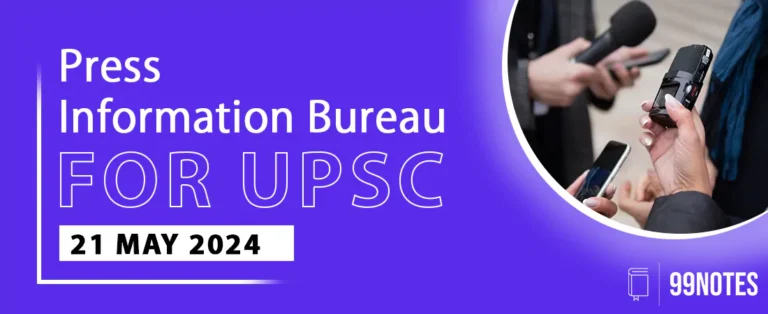04 July 2025: Indian Express Editorial Analysis
1. Closing In On TB
(Source: Editorial Page, The Indian Express)
| Topic: GS Paper 2 (Health), GS Paper 3 (Science and Technology – Health Tech & Biotechnology) |
| Context |
|
Progress under the National Tuberculosis Elimination Programme (NTEP)
- India has made significant strides in TB elimination, achieving a 17.7% reduction in TB incidence between 2015 and 2023, compared to a global decline of 8.3% as per WHO’s ‘Global TB Report 2024’.
- These achievements reflect India’s focused political commitment, technological innovation, and enhanced public health outreach.
The Persistent Diagnostic Gap in TB Care
- In 2023, an estimated 2.7 million TB cases went undiagnosed or unnotified globally, which compromises timely treatment and facilitates ongoing transmission.
- A large number of TB cases are subclinical, meaning individuals show no symptoms yet carry and spread the infection.
- This is particularly critical in high-burden countries like India, where over 50% of TB cases may be asymptomatic, complicating case detection.
Impact of the 100-Day TB-Mukt Bharat Abhiyan
- The campaign focused on mass screening of volunteers, including asymptomatic individuals.
- It identified over 2.85 lakh subclinical TB patients, demonstrating the power of AI-assisted diagnostics, especially digital chest X-rays, in detecting cases missed by conventional symptom-based models.
- The approach could serve as a global template for large-scale TB screening.
Innovation in Point-of-Care Diagnostics
- Traditional sputum tests are difficult to conduct, especially in the elderly, children, and people with co-morbid conditions.
- Emerging tools include:
-
Non-sputum tests (like nasal swabs and tongue swabs)
-
Portable digital X-rays with AI-based detection
-
PCR-based diagnostics tailored for point-of-care use
• These technologies help detect TB earlier and are cost-effective, scalable, and suitable for low-resource settings.
• Platforms such as mobile diagnostic vans and cloud-based test result delivery are enabling rapid case identification.
India’s Role in Global TB Vaccine Development
The editorial emphasizes the urgent need for a dedicated TB vaccine, drawing lessons from the Covid-19 vaccine model, which succeeded due to:
-
Global scientific collaboration
-
Streamlined regulatory clearances
-
Strong public-private funding and manufacturing capacity
• India, with its robust biotech infrastructure, can replicate this success in TB vaccine development, particularly with mRNA and recombinant vaccines.
Integrated Healthcare Strategies
TB elimination is now being synchronized with broader public health schemes, such as:
-
Nikshay Poshan Yojana for nutritional support
-
Immunization drives and primary health care delivery platforms
-
Integration with maternal and child healthcare
• India is also experimenting with risk profiling and tiered referral systems, helping stratify patients by severity and guide treatment protocols more efficiently.
Conclusion and Way Forward
- India’s efforts under NTEP reflect strong political will and innovative public health practices.
- However, the fight against TB must be scaled, institutionalized, and sustained, particularly by closing the diagnostic gap and fast-tracking the development of a long-awaited TB vaccine.
- With the right investment in science, regulation, and equitable access, India can lead the global war on TB, just as it did with Covid-19.
| Practice Question: (GS-2 | 15 Marks | 250 Words)
India has shown commendable progress under the National Tuberculosis Elimination Programme, yet key challenges in diagnostics and vaccine development persist. Critically evaluate India’s strategy in combating TB and suggest how lessons from the Covid-19 response can be applied to eliminate TB. |
Also Read: The Hindu Editorial Analysis- 04 July 2025
2. How to Move Mountains
(Source: Editorial Page, The Indian Express)
| Topic: GS Paper 1: Indian Society (Education, Literacy); GS Paper 2: Governance, Welfare Schemes; GS Paper 4: Ethics in Governance |
| Context |
|
Mizoram’s Literacy Milestone: A Historic First
- As per the latest Periodic Labour Force Survey, 98.2% of Mizoram’s citizens aged 7+ are literate, well above the national average of 80.9%.
- The state has surpassed even Kerala, long regarded as the torchbearer of literacy and human development in India.
- Mizoram’s adult literacy stands at 98.1%, and urban literacy at 98.3%, indicating negligible rural-urban disparity—an anomaly in a country where the average gap exceeds 15 percentage points.
The Model Behind the Success: Community-Led Development
- Mizoram’s achievement is not due to top-down bureaucracy or centralised technocratic push.
- The success came from a community-owned, volunteer-driven model based on the traditional value of tlawmngaihna, which emphasizes service to society and humility.
- Volunteers reached remote villages, navigated poor connectivity, and taught individuals who had long struggled with illiteracy.
- The literacy mission was built around trust, local ownership, and inclusive accountability.
Supporting Indicators of Human Development
- Mizoram ranks high on female workforce participation – 975 females per 1,000 male workers.
- It has the lowest infant mortality rate in the Northeast, and one of the lowest in India.
- The state also tops the region in nutrition, maternal health, and school attendance.
Wider Lessons for India’s Development Model
- Mizoram’s literacy revolution offers a blueprint for more developed, yet unequal states like Uttar Pradesh, Madhya Pradesh, or Bihar.
- It shows the power of moral leadership, cultural values, grassroots trust, and local institutions in achieving complex development goals.
- Investments in inclusion, public trust, decentralised service delivery, and digital access can help replicate this success nationwide.
- Literacy, when integrated with employment, gender parity, and governance reforms, can unlock broader development potential.
Recommendations and Way Forward
-
Mizoram’s success is more than a statistical milestone—it is a moral, political, and governance achievement.
-
In an era of widening inequality and broken public systems, Mizoram proves that community-led development, guided by inclusive values and cultural capital, can deliver transformative outcomes.
-
The rest of India must now study, adapt, and scale this model to realize the full potential of its citizens.
|
Practice Question: (GS-2 | 10 Marks | 150 Words) |
Read more – 03 July 2025 : Indian Express Editorial Analysis


